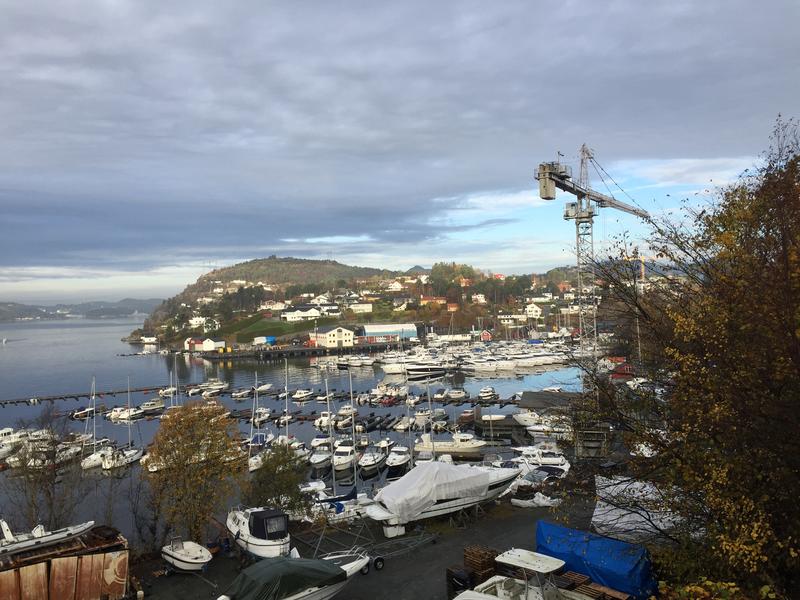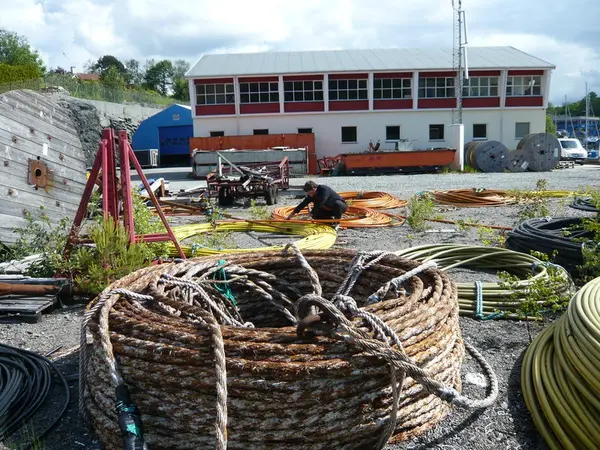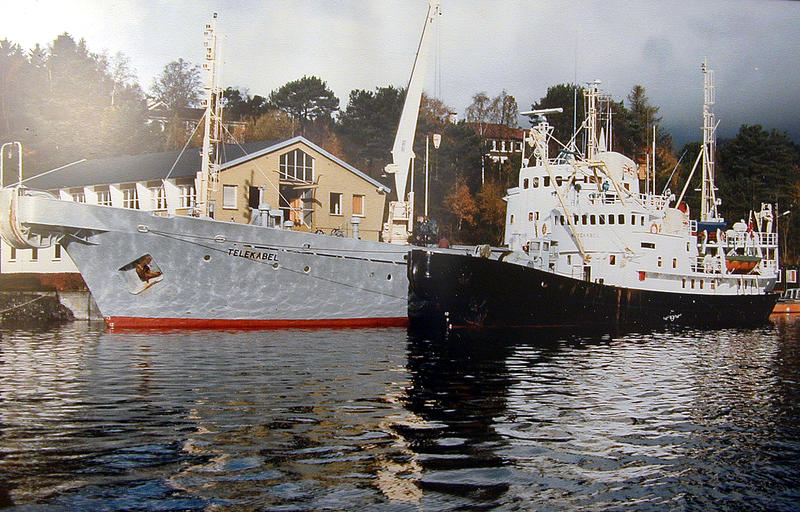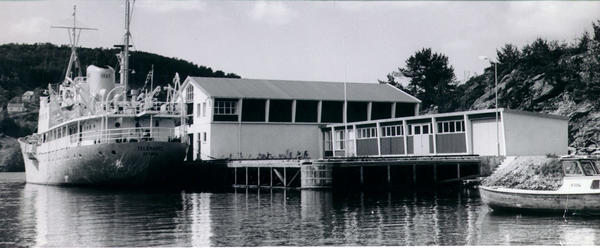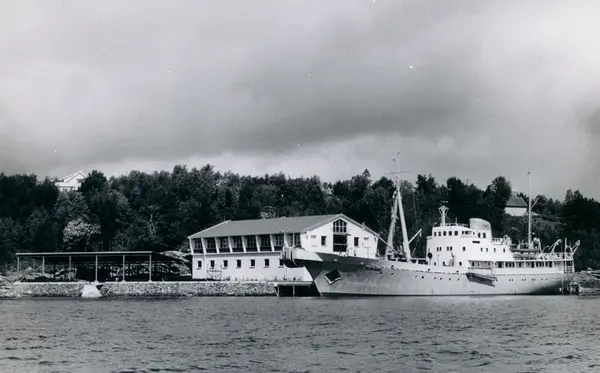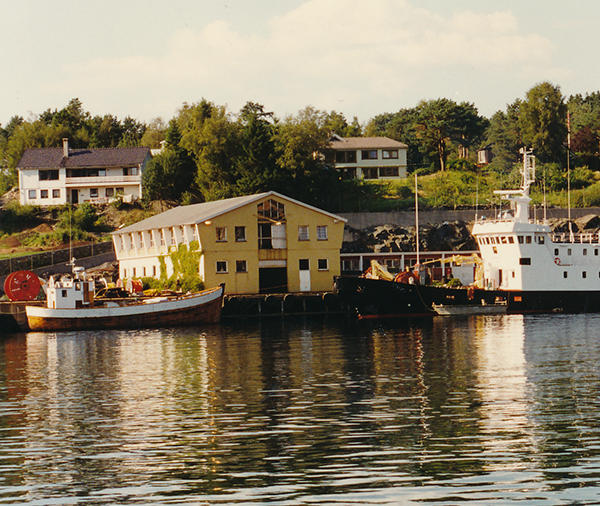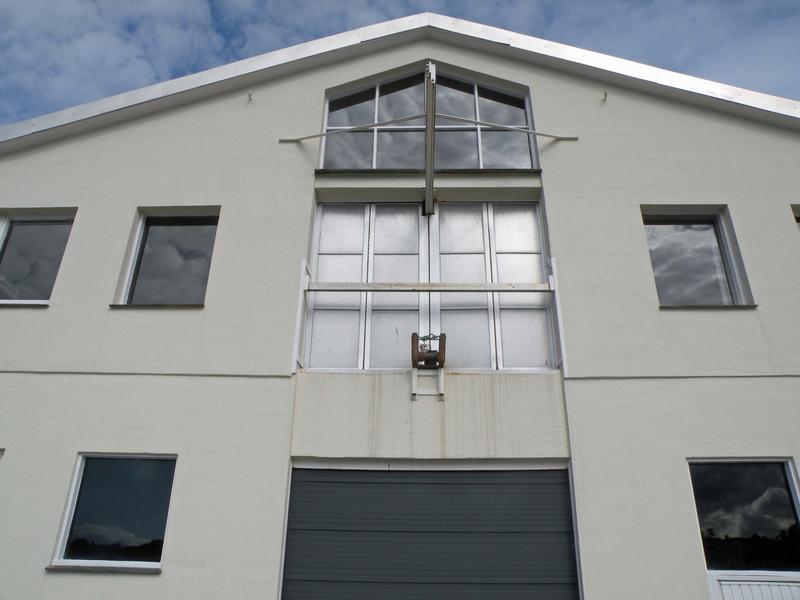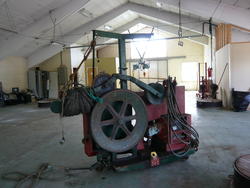-
Distant view of Dolviken sea cable depot Laila Andersen/Telemuseet
The red and yellow building from 1960 is the last sea cable house in Norway which is still in operation, but its time is inexorably coming to an end. New technologies like Satellite and mobile networks are about to make sea cables antiquated. What’s going to happen to the concrete building in Søreide then? Situated as it is in one of Bergen’s most attractive plots, it is likely to have been one of those buildings that would have been demolished to make room for some attractive apartments. That’s not what Telenor Cultural Heritage wanted. Dolviken sea cable depot was given a protection order in 1997 and added to the company’s list of cultural heritage which means that the slightly tattered industrial building will be preserved and looked after for the future. Antiquarian, Ellen Hole, is pleased. In 2015 she was assigned by Telenor to evaluate the condition of this object of protection. She concluded that the sea cable depot inhabits not just a local value, but also a national and even global importance.
- 1/2
Dolviken sea cable depot Cato Normann/Telemuseet - 2/2
Exterior Cato Normann/Telemuseet
Local importance
”Both for the neighbourhood and for our own wellbeing it was important to build something beautiful, so far as it could be done without significantly increasing construction-costs. A depot doesn’t necessarily have to be a square, grey box.”
It was supposed to be beautiful, read an article in the trade publication, Verk og Virke, when Dolviken was opened for service in 1960. According to antiquarian, Ellen Hole, the building is still “architecturally well thought through,” “simple and elegant,” and “show care to details.” Little has been altered throughout the years. The interior, machinery and tools are all pretty much the same as what the workers encountered when they clocked in that first day 56 years ago: Sea cables in enormous coils are kept in the great hall on the ground floor. The cables can be hoisted up to the first floor through a hatch, and over to the boats on the quay-side. The building is, in other words, purpose-made. Exactly because the authenticity is so well preserved, Dolviken sea cable depot displays an important, but relatively unknown part of history; the history of the Norwegian sea cable service.
Both for the neighbourhood and for our own wellbeing it was important to build something beautiful, so far as it could be done without significantly increasing construction-costs. A depot doesn’t necessarily have to be a square, grey box.
- 1/3
Cable ships in harbour, Dolviken 1960ties Ukjent/Telemuseet - 2/3
Dolviken, 1960ties Ukjent/Telemuseet - 3/3
Dolviken, 1960ties Ukjent/Telemuseet
-
Dolviken sea cable depot, 1970ties Ukjent/Telemuseet
National and global importance
Already in 1850, the first deep sea cable was laid between England and France. Here in Norway we eventually got a “river cable” in 1854. It crossed Drammenselva, and was part of the telegraph line between Kristiania (Oslo) and Drammen. In 1867 a sea cable was opened between Hirtshals in Denmark and Arendal in Norway. For Norway with all its coasts, the sea cable has been crucial to the development of telecommunication, and an invaluable way for people to contact each other. All of a sudden, two fishing communities could communicate even through high seas and bad weather, and this is how sea cables have affected and simplified the lives of Norwegians for over 160 years, while at the same time linking us to a global underwater network.
The first cables were made of copper insulated with gutta-percha and reinforced with steel wire. This is quite similar to modern cables, but for the lack of fibre-optics inside. Specially built cable boats are needed to roll out these enormous cables. Already in 1858, Telenor (Telegrafvæsenet) hired the sail-schooner, “Alpha,” which was towed by a small paddle boat called “Bjørgvin.” As the need increased, Telenor started its own production of boats. The biggest ship they built was called “Telekabel” with a length overall of 175 feet, delivered by Glommen Mekaniske Verksted in 1958. And she was docked…you guessed it, at Dolviken.
-
Dolviken sea cable depot, 2009 Cato Normann/Telemuseet
Further use?
What will happen to Dolviken sea cable depot when the last cable ship has left the harbour? Protection through use is key to Telenor Cultural Heritage, and incorporated in that is the wish that extraordinary industrial buildings don’t end up as empty shells when they come to the end of their original use. Ellen Hole suggests therefore in her report, that the building is opened to cultural activity, and that the fantastic area around the depot is made accessible to the public. But, she adds; “…a prerequisite is that physical traces of the building’s former life is kept, and that this is integrated in the interior.” The loading crane up in the ceiling, the enormous cable drums on the ground floor and the factory windows are some of the elements that will have to be part of the journey as Dolviken sea cable depot enter its next phase. That’s how Norwegian sea cable history will add colour to the atmosphere, also in the future.
- 1/4
Interior 1990 Cato Normann/Telemuseet - 2/4
Cable depot Cato Normann/Telemuseet - 3/4
Cables, details Cato Normann/Telemuseet - 4/4
Cable depot Cato Normann/Telemuseet
Kilder
- Nordsveen, Arve (2015, oktober, 08) Telenor som rederi Norwegian Telecom Museum
- Brand, David (1997, mai, 29) Sjøkabellager og kaianlegg – Dolviken Norwegian Telecom Museum
- Hole, Ellen (2016, januar, 07) Report concerning Dolviken sea cable depot
